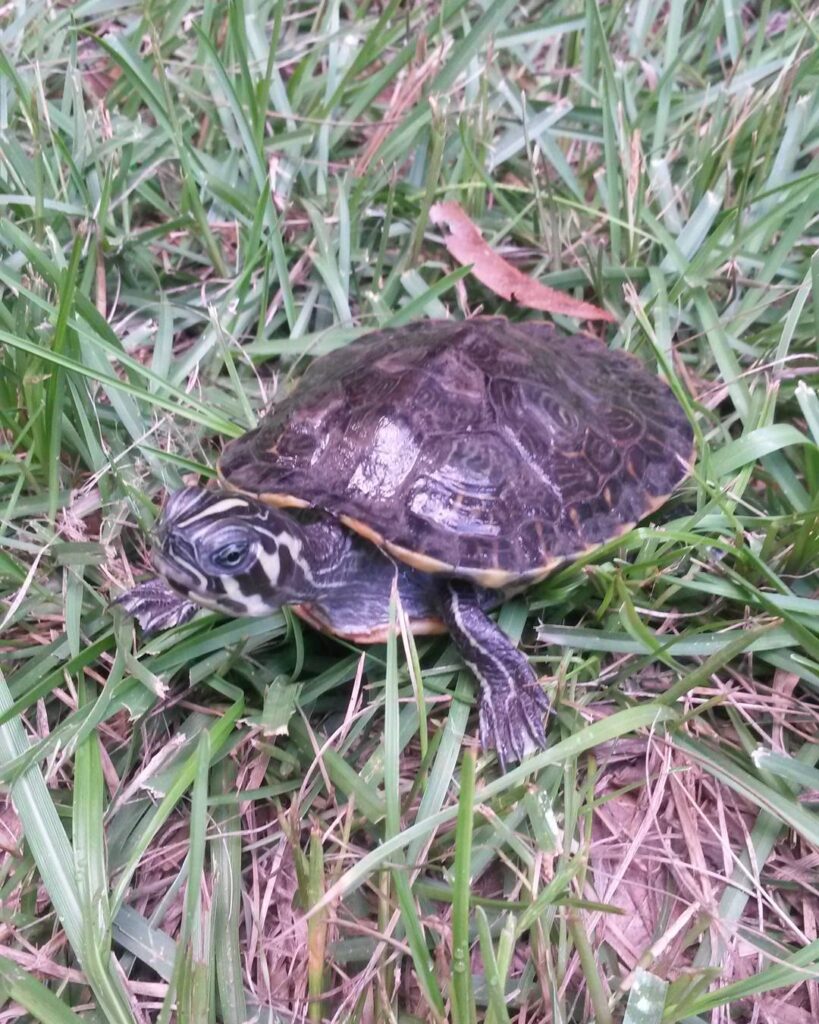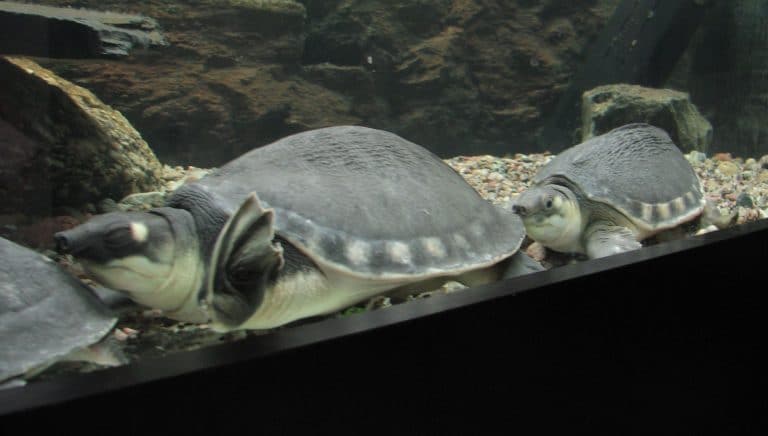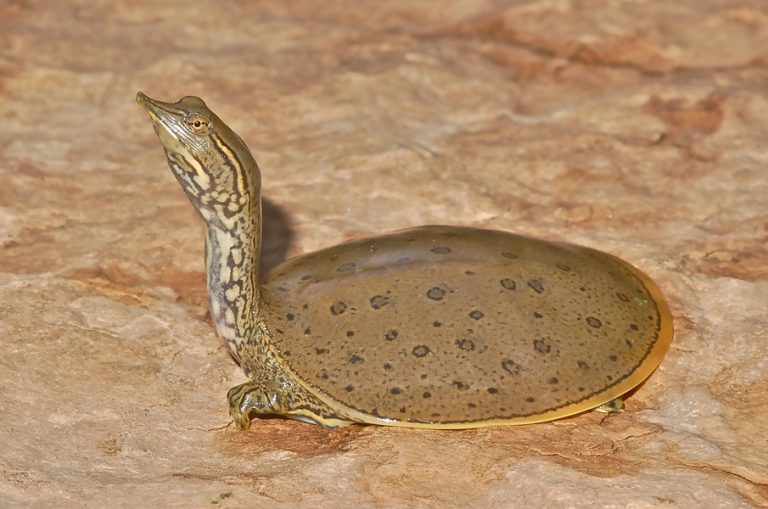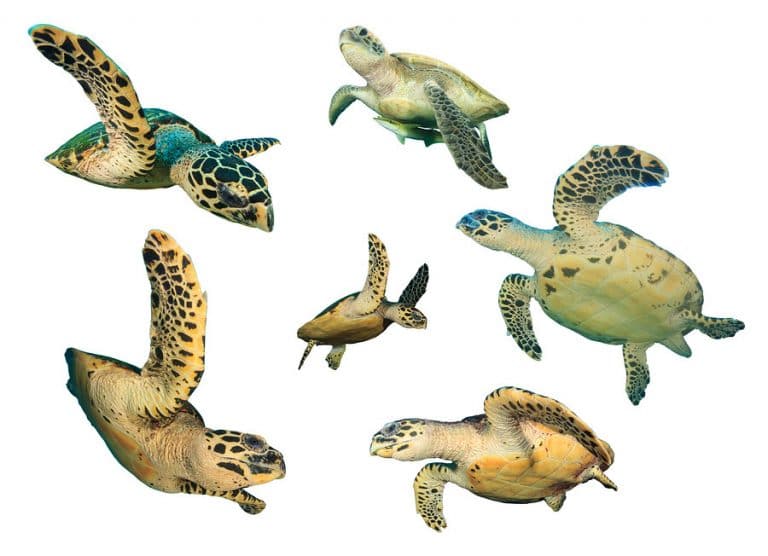Cooter Turtles – All About Fascinating And Remarkable Reptiles
Are you a fan of turtles? If you are, then you’ve probably heard of the Cooter turtle. These fascinating creatures are a popular choice for pet owners and nature enthusiasts alike. But did you know that there is so much more to these turtles than meets the eye?
In this article, we’ll take a closer look at the world of Cooter turtles, from their physical characteristics to their habitat and behavior. Whether you’re interested in learning more about these adorable creatures or considering adopting one as a pet, this article has got you covered.

Anatomy & Appearance Of Cooter Turtles
Cooter turtles are a type of freshwater turtle known for their distinctive appearance and physical characteristics. They have a smooth, oval-shaped shell that is typically brown or olive-green in color, with yellow or greenish-yellow markings on the plastron (underside). The shell is also decorated with a series of scutes (hard, plate-like structures) that help protect the turtle from predators and other threats.
One of the most recognizable features of cooter turtles is their bright yellow or orange markings around their eyes. These markings are thought to play a role in communication, although their exact purpose is not fully understood. Cooter turtles also have long, webbed toes that are ideal for swimming and moving around in aquatic environments.
Like other turtles, cooter turtles have a distinctive anatomy that is well-adapted to their environment. They have a bony shell that serves as a protective covering for their body, and their limbs are well-suited for swimming and moving around in the water. Cooter turtles are also able to retract their heads and legs into their shells for protection when threatened.
Internally, Cooter turtles have a complex anatomy that includes a number of specialized organs and systems. One of the most important of these is the respiratory system, which allows the turtle to breathe air while submerged in water. Unlike fish, which extract oxygen from the water through their gills, Cooter turtles breathe air through their lungs.
Cooter turtles also have a specialized digestive system that allows them to process a wide variety of foods.
Where Are Cooler Turtles Found?
Cooter turtles, also known as cooters, are a species of freshwater turtles native to North America. They belong to the family Emydidae and the genus Pseudemys, which includes several different species of turtles.
There are several different species of Cooter turtles, each with its own unique characteristics. Some of the most common species include the Florida cooter (Pseudemys floridana), the yellow-bellied slider (Trachemys scripta scripta), and the red-eared slider (Trachemys scripta elegans).
Cooter turtles are found primarily in the southeastern United States, although some species can also be found as far north as Virginia and as far west as Texas. They are especially common in the freshwater habitats of Florida, Georgia, Alabama, Mississippi, and Louisiana.
Those creatures prefer slow-moving or still bodies of water, such as ponds, swamps, and marshes. They can also be found in rivers, streams, and lakes, although they tend to avoid areas with strong currents. In the wild, cooter turtles can be found basking on logs, rocks, and other objects near the water’s surface.
Cooter turtles are believed to have originated in North America, with some species dating back as far as the Miocene epoch (23 to 5.3 million years ago). Over time, they have adapted to a variety of different environments and become an important part of the local ecosystems.

What Do Cooter Turtles Eat?
Cooter turtles are omnivores. Therefore, they eat both plant and animal matter. Depending on their environment and the accessibility of food sources, their nutrition may change. In the wild, cooter turtles are opportunistic feeders and will consume whatever food sources are available.
Plant matter makes up a significant portion of a Cooter turtle’s diet. They are known to feed on a variety of aquatic plants, such as water hyacinth, duckweed, and algae. These plants are an important source of nutrients for Cooter turtles, providing them with essential vitamins and minerals.
Cooter turtles are also known to consume a variety of small animals, such as insects, snails, and small crustaceans. They may hunt these animals in the water or on land, depending on the species and habitat. Insects and snails are a particularly important part of a young Cooter turtle’s diet, as they are rich in protein and other essential nutrients needed for growth and development.
Fish are also a common prey item for Cooter turtles, especially larger individuals. They are known to hunt a variety of fish species, including sunfish, bass, and catfish. Cooter turtles use their strong jaws and sharp beak to capture and consume their prey.
When they are in captivity, Cooter turtles can be fed a variety of commercial turtle foods that are formulated to meet their nutritional needs. These foods may contain a combination of plant- and animal-based ingredients, such as soybean meal, fish meal, and algae. It is important to provide a balanced diet for captive cooter turtles, as an improper diet can lead to health problems and malnutrition.
It is worth noting that feeding wild Cooter turtles can have negative consequences, as it can disrupt their natural feeding behaviors and potentially lead to overpopulation in certain areas. Feeding turtles in the wild can also introduce invasive species and pathogens that can harm native wildlife.
Cooter Turtles as a Pet
Cooter turtles are a fascinating and unique species, and it’s no surprise that some people may be interested in keeping them as pets. However, it’s important to understand that Cooter turtles have specific needs and requirements that must be met in order for them to thrive in captivity.
First and foremost, it’s important to note that some species of Cooter turtles are protected by law, and it is illegal to capture or keep them as pets without the appropriate permits. It’s important to research the laws in your area before considering a Cooter turtle as a pet.
Even if it is legal to keep Cooter turtles in your area, it’s important to understand that they require a significant amount of space and a specialized habitat to thrive. These turtles are aquatic and require a large, deep body of water to swim in, as well as basking areas and hiding places. They also require a specific diet that includes a variety of aquatic plants, insects, and other prey items.
It can be a bit challenging to keep Cooter turtles as pets. That’s why you need to ensure that you have the necessary knowledge and resources to provide for their needs. They can also be long-lived, with some species living for 30 years or more, so it’s important to be prepared for a long-term commitment.
In addition to the practical considerations, it’s important to consider the ethical implications of keeping Cooter turtles as pets. These turtles are an important part of the local ecosystem, and removing them from the wild can have negative impacts on wild populations. Furthermore, many Cooter turtles are bred in captivity and sold as pets, which can perpetuate a market that may not be in the best interests of the turtles.

Conservation & Protection
Cooter turtles are an important part of the local ecosystem, playing a key role in maintaining the balance of aquatic habitats. However, Cooter turtles face several threats, including habitat loss, pollution, and over-exploitation. As a result, their conservation status is a cause for concern.
The conservation status of Cooter turtles varies depending on the species and location. In general, they are classified as species of least concern by the International Union for Conservation of Nature (IUCN). However, some populations are considered threatened or endangered due to habitat loss and other factors.
For example, the Florida cooter is listed as a species of special concern in Florida, meaning it is at risk of becoming endangered. The Alabama red-bellied turtle is classified as endangered under the U.S. Endangered Species Act, due to habitat loss and degradation.
To protect Cooter turtles and their habitat, several conservation measures are being implemented. One of the most effective is the establishment of protected areas, such as national parks and wildlife refuges, which provide a safe haven for these turtles and other species. For example, the Florida Cooter is protected by the Florida Fish and Wildlife Conservation Commission, which has established regulations to limit the taking of these turtles.
Cooter turtles play an important role in the local ecosystem, both as prey and predators. They are an important food source for a variety of predators, including raccoons, otters, and alligators. In turn, cooter turtles help regulate populations of insects, fish, and other species that depend on healthy freshwater ecosystems.
Bottom Line
As you can see, there’s so much to appreciate about these adorable turtles. While many Cooter turtle populations are currently facing threats such as habitat loss and pollution, there are steps we can take to protect these amazing animals. In either case, one thing is undoubtedly sure — Cooter turtles are a reminder of the beauty and complexity of the natural world, and a call to action to protect and preserve our planet’s incredible biodiversity.

Nato is a content writer and researcher with a background in psychology who’s eager to explore the wonders of nature. As a travel enthusiast and animal lover, she hopes to inspire others to discover and cherish the beauty and importance of the natural world.







